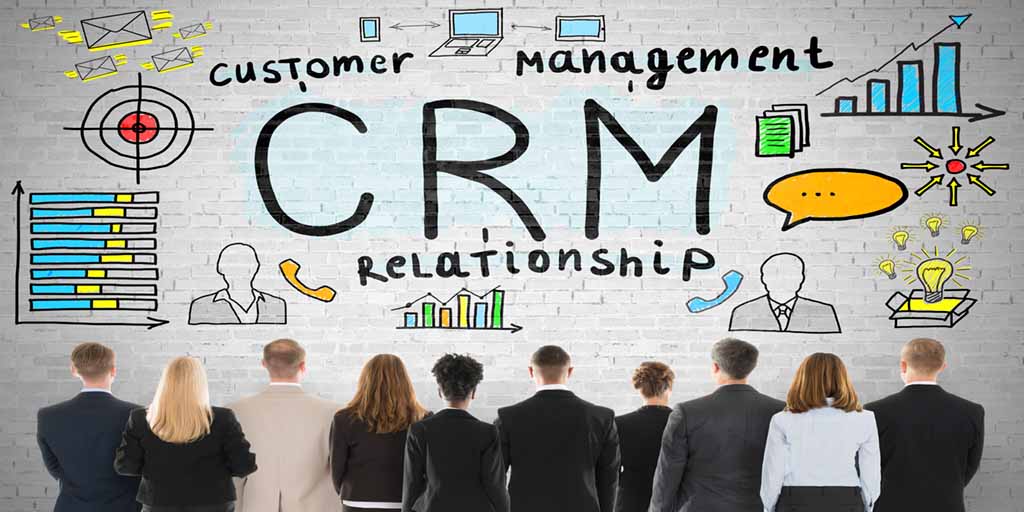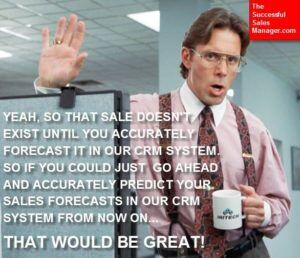CRM Reflections from the Consultant Who Became the Client

CRM is a slow, careful build, but the payoff for banks and credit unions is out there.
For the last 16 years, Cornerstone Advisors has worked with banks and credit unions to help them select and implement systems. So, guess what we did over the last eight months? We selected and implemented a customer relationship management system. Yes, we had to execute on all of those ideas and processes we write, speak and consult about.

I imagine the litany of thoughts entering readers’ cynical minds: “Chicken comes home to roost,” “Poetic justice,” “What’s good for the goose,” etc. The reason I suspect you of thinking these thoughts is that at various points in the project, I had them too. For all the helping and observing I do, there is nothing like being on the hook for getting a system up and running to make me really appreciate how difficult it is to do right.
Our perspective is this: Financial institutions that have not installed a CRM system, will. The capabilities of new systems, or newest versions, are excellent in terms of helping banks and credit unions manage their information and relationships. The views and reporting really do make delivery easier. Some institutions will use the sales pieces more, some will use the relationship management components more, but everyone will use something.
So, with scars healing and humble pie consumed, here are some thoughts for bankers to keep in mind as they go through the process of looking at CRM systems.
- Busy people need to do more work with a CRM system, but the trade-off is better information for the company. The extra work starts right away; the payoff takes a while. Let’s not kid ourselves. Sure, putting every new contact, comment and contact history, with emails attached and all the other things required to build a good volume in a CRM system means more work. But until there are good comments and notes on each customer record, users won’t realize the benefits. Managers and project champions need to be honest about the extra work involved in implementing a CRM system, and they need to show employees as quickly as possible the return on their efforts.
- Clean data matters. If there is one thing I learned (again), it’s that it’s necessary to be militant in enforcing good data standards. One letter difference in somebody’s name can produce a duplicate record. One change in nomenclature (Central Federal vs. Central Fed) and you have two client records. Contacts at one client can have addresses formatted in five different ways. That’s somewhere between an annoyance and an issue in Outlook; it’s a killer in CRM.
The takeaways? First, there will be a debate about what input gets centralized for accuracy and what gets decentralized for speed and convenience. We’re leaning toward initial input centralized, maintenance decentralized, but the entire industry is 50/50 on this question. Second, somebody needs to be charged with ongoing data standardization and maintenance, and banks need to budget for it.
- Treat CRM systems like the big, complex, interconnected database tables they are. Every time I use the system, I can just see the thinking of the database people who designed it. People link to companies. Companies link to projects. Projects link to employees. Campaigns and purchases link to the company and the person who made the decision. Call notes link to the person, but also to the company. Vendors we work with are linked to the clients we work with. All of these are linked to external websites et al.
It’s very powerful if done right. It’s also hard to do right. If I enter a new contact and fat-finger the company name, the two don’t link correctly, so when I look up the company, it’s 50/50 that I’ll see that employee. When I initially started using CRM, I kept asking why there were so damn many pick lists I had to use as opposed to just typing. Now I know. Every time I use the pick list, the database table links are set correctly. I don’t think everybody who uses these systems gets this strongly enough.
- People use e-mail and document management systems for a lot of CRM needs. These habits are not easy to break. Quick, what’s the fastest way to look up somebody’s email address? Quick, where do I look for a proposal document in the middle of a call? Honestly, a ton of people would say email for both. I can go to my inbox, type the person’s name, get their email address and that proposal I attached to an email about a week ago. And you know what? It’s pretty easy.
Just because team members have been given CRM as an alternative to email or some other system, it doesn’t mean they will jump right in and use it instead. Why not? It’s likely not any faster, and, most people presented with two equally good options will keep using the one they’re accustomed to until they have a good reason to change. In the long run, the reason will be all the other things they can see when they use CRM.
This is a carrot versus stick challenge for the team selling CRM internally. Mandate use of CRM all you want, but what gets buy-in is a system that’s equally easy to use and has an upside in terms of the information people can see about a client or contact (slow build – see #1).
- Training is an important first step, but one-on-one follow-up is equally important. It can’t be assumed that after training employees will go back to their desks and jump right into the system. Project champions should go out and talk to people a week or two after training. I did, and I learned two important things:
- The trainees never think the system is as easy to use as the people training them. I think that’s because they just haven’t learned the short-cuts and fastest screen navigation options. So find out how you can make things easy.
- In the early stages of CRM deployment, a lot of employees don’t have to use CRM to do their jobs and get through their days. They may not even sign on every day. So, give them a reason to. Carrot, not stick.
To summarize, we had to put in a CRM system. You will have to put one in if you haven’t already. Our attitude is this:
- Nobody will love the first version of CRM you roll out. That’s the “more work” phase.
- When you roll out v2, people will be relieved that you fixed all of the stupid things you put in V1 (which you probably did) and incorporated some of their suggestions (which you should).
- When you roll out V3, they’re going to say that this whole thing isn’t so bad. Then you’re off to the races.
CRM is a slow, careful build. Habits are hard to break or change. But the payoff is out there.
-TR
